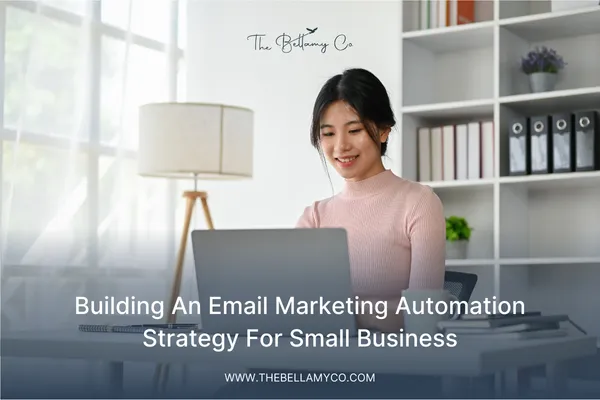
Affordable Digital Marketing for Startups: Hacks, Tools & Strategies
Affordable Digital Marketing For Startups: Hacks, Tools & Strategies That Work
When you launched your startup, you probably weren’t dreaming about writing email sequences, scheduling Instagram posts, or figuring out SEO hacks at 1 a.m.
You’ve got vision. You’ve got product-market fit. But now, you need to get found and build brand awareness, all without the hefty budget of an established company with a full-blown marketing team.
And if you’re like most startup founders or small business owners we work with, you’re already wearing a dozen hats. What you don’t need is another “just be consistent on social” speech from a so-called growth hacker.
You need affordable digital marketing strategies for startups that actually get results, scale with you, and (most importantly) don’t make you hate marketing.
We’re breaking down real, proven marketing tactics that are lean, efficient, and highly effective for startups. Whether you're looking to generate organic traffic, increase visibility for your offer, or finally automate some of the chaos, this list is your starting line.
TL;DR? Here's what's inside . . .
Affordable Digital Marketing For Startups: Hacks, Tools & Strategies That Work
#1 Content marketing that makes a big impact
2. Use AI as your creative assistant (not replacement)
4. Design matters, but keep it simple
5. Prioritize consistency over perfection
#2 Email marketing that converts without complicated funnels
2. Create a welcome sequence that feels human
3. Keep it consistent and casual
4. Segment, but don’t overthink it (yet)
#3 Organic social media marketing (no ad spend needed)
1. Choose the right platforms (not all of them)
4. Leverage UGC and community content
#4 Simple SEO strategies to drive organic traffic
2. Optimize for humans and search engines
3. Focus on local SEO (if you serve a region)
4. Keep your website fast and mobile-friendly
5. Create content that solves real problems
#5 Leverage systems and automation
2. Set up CRM and lead follow-ups
3. Connect everything in one place
4. Track the metrics that matter
Bonus hacks from a trusted digital marketing agency
1. A/B test your headlines and CTAs
3. Use “reverse content planning”
4. Install basic heatmaps on your site
5. Automate your lead gen flow
1. What are the most effective marketing strategies for startups?
2. Do I really need a marketing agency?
3. How do I know if my digital marketing is working?
4. How do I choose the right digital marketing agency?
5. When should I start digital marketing as a startup?
Digital marketing strategies that work for you

#1 Content marketing that makes a big impact
If there’s one marketing strategy that startups consistently underestimate, it’s content marketing. Not because they don’t see its value, but because they assume it requires a massive team, fancy tools, or a six-month runway before seeing results.
Let’s bust that myth right now. With the right approach and smart tools, content marketing is one of the most affordable digital marketing strategies for startups, and it’s all about storytelling, something you’re likely already doing every day.
Why it works for startups
Content marketing builds brand trust, organic traffic, and SEO equity over time. It attracts your ideal audience by solving their problems, answering their questions, and showing them your brand is here to help, not just sell.
It also allows you to express your brand voice and aesthetic, which matters deeply if you're building a business rooted in creativity, design, or innovation.
How to do it affordably
Here’s how to create high-impact content marketing that feels totally doable, even with limited time and resources.
1. Start with a blog
No, blogging isn’t dead—it’s just evolved. Write content that answers the questions your dream customers are typing into Google. (For example: “Best productivity tools for freelance designers” or “How to grow an eCommerce brand without paid ads.”)
2. Use AI as your creative assistant (not replacement)
You don’t need to be a copywriter to write compelling blog posts. Utilize tools like ChatGPT to assist with drafting, brainstorming headlines, or repurposing content.
3. Repurpose everything
Turn one blog into:
A carousel on Instagram
A short-form video for TikTok or Reels
A thought-leadership post on LinkedIn
Snippets for your email newsletter
Maximize the lifespan of every piece. One idea = five platforms.
4. Design matters, but keep it simple
Your brand aesthetic doesn’t need to cost $5k to look professional. Use Canva Pro for branded templates and visuals that are on-point without needing a designer on retainer.
5. Prioritize consistency over perfection
A blog that publishes one quality post per week will outperform a flashy content campaign that dies after a month. Set a realistic cadence you can maintain or outsource when you’re ready.
If content planning feels overwhelming, consider partnering with a marketing consultant for a growing business who can help you create a streamlined editorial process that fits your goals and bandwidth.
Want Done-for-You Content Without the Overhead?
Our Affordable Digital Marketing Services are designed specifically for startups like yours. We create on-brand, conversion-driven content without blowing your budget.

#2 Email marketing that converts without complicated funnels
Email marketing is one of the highest-ROI digital marketing strategies out there. It's direct, personal, and gives you total control, unlike algorithms that ghost your posts without warning. A simple, thoughtful email sequence can drive sales, nurture trust, and keep your brand top-of-mind, all while you sleep.
Why it works for startups
Email lets you own your audience, unlike social platforms that can change the algorithm overnight. You’re not renting attention, you’re building relationships in an inbox they check every day.
Plus, it scales. Whether you have 10 subscribers or 10,000, one great email takes the same effort to send, but the impact multiplies as you grow.
How to do it affordably
Let’s skip the complicated click-funnels and multi-tier drip campaigns. This is how you make email marketing work without breaking the bank.
1. Use simple, scalable tools
Start with free email marketing platforms—they’re startup-friendly, visually intuitive, and often free until your list grows. You don’t need Salesforce when you're still building your first 1,000 subscribers.
2. Create a welcome sequence that feels human
Your welcome sequence = your first impression. A 3–5 email series introducing your brand, mission, and offer (without hard-selling) sets the tone and starts building trust.
Pro tip: Make it sound like you, not a robot. A quick founder story or “why I started this” email goes a long way.
3. Keep it consistent and casual
Think of email like a direct line to your inner circle. Try a weekly or bi-weekly “Founder’s Note,” a short email sharing insights, stories, product updates, or just something interesting your audience would enjoy.
4. Segment, but don’t overthink it (yet)
Yes, segmentation is powerful, but don’t let it slow you down. As your list grows, you can begin segmenting based on interest or behavior. For now, focus on crafting emails that are both helpful and engaging.
Many founders work with a marketing operations consultant for SMBs to simplify their tech stack and automate campaigns once they’re ready to scale their communication systems.

#3 Organic social media marketing (no ad spend needed)
Social media can feel like a full-time job. But here's the good news: you don’t need to be on every platform, post every day, or chase every trend to see real results.
With the right focus and voice, organic social media marketing can help you build brand awareness, connect with your audience, and create momentum without spending a dollar on ads.
Why it works for startups
Startups thrive on storytelling, and social media platforms are storytelling machines. Whether it’s an Instagram carousel, a TikTok “behind the scenes,” or a real-talk LinkedIn post, these channels let you humanize your brand and speak directly to your audience.
Plus, platforms like Instagram and TikTok reward authentic, high-engagement content, not high production value. Translation: you don’t need a studio, just a smartphone and a point of view.
How to do it affordably
Here’s how to build a presence that works for your business, without burning out.
1. Choose the right platforms (not all of them)
Instead of being mediocre on five platforms, focus on being excellent on one or two. For B2C or visual brands, start with Instagram or TikTok. For B2B or service-based offers, LinkedIn is your best bet.
Ask yourself: “Where is my audience already spending time, and where do I enjoy showing up?”
2. Batch, schedule, and reuse
Set aside a few hours once a week to create content in batches. Use tools like Metricool to schedule posts. Repurpose your blog content into carousels, quotes, reels, or stories.
3. Focus on value, not vanity
Chasing likes and follows can be a trap. Instead, focus on:
Sharing useful tips
Documenting your process
Telling brand stories
Engaging in real conversations
Your goal isn’t just followers, it’s connection.
4. Leverage UGC and community content
Encourage customers to tag you, leave reviews, or post about their experience. User-generated content (UGC) is social proof, content fuel, and brand love all rolled into one. And it’s free.

#4 Simple SEO strategies to drive organic traffic
SEO (search engine optimization) is one of the most powerful ways to get found by the right people at the right time. SEO doesn’t have to be complicated or expensive. Modern SEO is about clarity, consistency, and helping search engines understand what your business does and who it helps.
Why it works for startups
Unlike paid ads that stop the minute your budget dries up, SEO compounds over time. One optimized blog post or landing page can continue to drive traffic, leads, and sales for months, even years. With a few simple tools and some strategic content, you can start ranking without blowing your marketing budget.
How to do it affordably
Here are the most effective ways to get real traction with a lean SEO setup.
1. Do basic keyword research
Use free or low-cost tools like AnswerThePublic or Google's own Keyword Planner to find long-tail keywords your audience is actually searching for.
2. Optimize for humans and search engines
Every blog post or page should include:
A clear headline (with your main keyword)
Subheadings (H2s with related terms)
Alt-text on images
Internal links (like this one to our Digital Marketing Services)
A clear call-to-action (CTA)
But don’t stuff keywords. Write like a human, and Google will like you more.
3. Focus on local SEO (if you serve a region)
If you’re a location-based business or service provider, claim and optimize your Google Business Profile. Add photos, respond to reviews, and keep your info accurate. You’ll show up more often in “near me” searches and local map packs.
4. Keep your website fast and mobile-friendly
SEO is also about user experience. Use tools like PageSpeed Insights to test your site speed, and make sure your site is mobile-optimized (most traffic comes from phones these days).
5. Create content that solves real problems
Google wants to surface useful, relevant content, not keyword-stuffed pieces. Focus on answering questions your customers are actually asking, and you’ll climb the search engine rankings naturally.

#5 Leverage systems and automation
If marketing feels like a full-time job on top of your actual full-time job, you're not imagining it. Posting, emailing, following up, updating... it never ends.
That’s where marketing automation comes in. For startups, automation is the key to scaling without hiring a whole team or working 14-hour days.
And yes, it can be done on a budget.
Why it works for startups
Your time is your most limited (and valuable) resource. Automation helps you:
Stay consistent without manual effort
Reduce dropped leads or forgotten follow-ups
Free up headspace to focus on creative, strategic work
The best part? Most automation tools today are low-cost or even free to start, and they plug right into the platforms you’re already using.
How to do it affordably
Here’s how to start automating your marketing operations without needing a full-blown tech stack or IT team.
1. Automate your emails
Remember that welcome sequence from earlier? Set it and forget it. Email automation tools let you send personalized emails based on user actions (sign-ups, downloads, purchases) with drag-and-drop ease.
2. Set up CRM and lead follow-ups
Utilize customer relationship management (CRM) tools to capture website leads and automatically send follow-ups or appointment links.
3. Connect everything in one place
An all-in-one platform like Elevate360 houses multiple automation tools under one roof, including CRM, email marketing, lead tracking, and more. An all-in-one platform acts as a glue for your tech stack. For example:
New lead signs up → auto-added to email list
Customer purchase → send thank-you email
Form filled out → notify you via Slack or email
No coding, no problem.
4. Track the metrics that matter
Use Google Analytics or built-in dashboards from your tools to monitor performance. Knowing what’s working = less wasted effort. You don’t need a data team—just a weekly check-in with your own dashboard.
A marketing operations consultant for SMBs can help you connect these analytics tools, build simple automations, and make sure your data actually drives smarter marketing decisions.
Want a Done-for-You Automation System That Runs While You Sleep?
Check out our blog on Types of Marketing Automation for Startups and Small Businesses for a deeper dive.

Bonus hacks from a trusted digital marketing agency
Sometimes, the difference between meh marketing and momentum is just knowing a few key moves the pros use. These aren’t big-budget tactics—they're smart, strategic tweaks that can help your startup grow faster, stay lean, and make every campaign count.
We’ve seen these exact tactics help small teams stretch their efforts, automate intelligently, and turn content into conversions without burning out.
1. A/B test your headlines and CTAs
Your headline is the handshake. Your CTA is the invite. Testing just these two things (on landing pages, emails, or even IG stories) can double your conversions without creating any new content.
2. Build a branding kit
You don’t need a $5k brand package. Just create a basic style guide:
Fonts
Colors
Tone of voice
Logo variations
Brand mission or “about” blurb
This keeps your content consistent and professional, even if you’re DIYing everything.
3. Use “reverse content planning”
Instead of asking “What should I post?”—start with your offer or next product drop. Then reverse-engineer a few weeks of content to build excitement, educate, and create urgency.
→ Example: If you're launching a new course, share three behind-the-scenes posts, two client testimonials, one email case study, and a countdown series in stories.
4. Install basic heatmaps on your site
Use free tools like Hotjar to see where people are clicking (or not). It’s an easy way to figure out why people aren’t converting.
5. Automate your lead gen flow
Got a lead magnet or freebie? Automate the whole funnel:
Landing page
Instant delivery via email
Follow-up email sequence
CTA to book a discovery call
Minimal tech, maximum impact. And if you ever feel stuck choosing what to automate or how to prioritize your next campaign, a seasoned marketing consultant for growing businesses can help you refine your workflow and uncover the highest-impact actions for your brand.

Frequently Asked Questions
1. What are the most effective marketing strategies for startups?
Content marketing, email marketing, and SEO are some of the most effective and affordable marketing strategies for startups. They help build your online presence, drive organic traffic, and engage customers across key marketing channels.
2. Do I really need a marketing agency?
If you're short on time, tech skills, or strategy, partnering with a marketing agency can streamline your marketing efforts and free you up to focus on what you do best. The right digital marketing agency brings structure, creativity, and systems.
3. How do I know if my digital marketing is working?
Use analytics tools to track website traffic, email performance, and conversions. If you're hitting goals and seeing steady growth, your marketing campaign is working. When you align your strategy with metrics, it becomes easier to pivot and optimize.
4. How do I choose the right digital marketing agency?
Look for agencies that understand startup marketing and your specific pain points. The best partners are transparent, results-driven, and help you leverage the right mix of digital marketing strategies to grow sustainably.
5. When should I start digital marketing as a startup?
Start early. Even simple digital marketing strategies—like SEO, social content, and email—help build momentum. A strong foundation now means less playing catch-up later. The sooner you start, the sooner you’ll learn what works and engage with your audience effectively.

Digital marketing strategies that work for you
We’ve covered affordable digital marketing strategies that help startups grow smarter, not harder. These aren’t hypey hacks or one-size-fits-all tactics. They’re lean, scalable systems designed for founders who want real results without wasting time, money, or energy.
Smart, affordable digital marketing for startups isn’t about hustle, it’s about systems, strategy, and leveraging what works. Whether it’s building your brand voice, driving organic traffic, automating your outreach, or simply creating space to breathe, it’s all within reach.
You’ve got the vision. Let us help you amplify it.
Book a FREE discovery call today and get expert guidance from a team that understands startup marketing and how to scale it without the stress.




